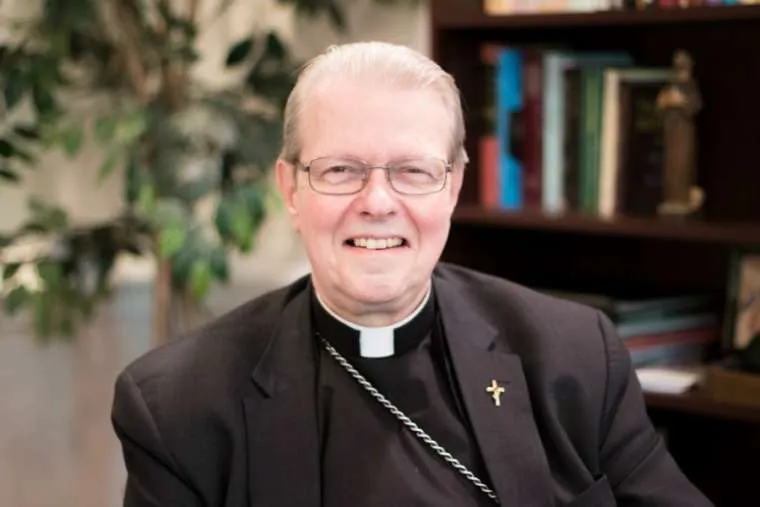
Albany, N.Y., Aug 6, 2018 / 04:45 pm (CNA).- The Bishop of Albany said Monday that a commission of lay Catholics should be formed to investigate claims of abuse or misconduct made against bishops.
“What is needed now is an independent commission led by well-respected, faithful lay leaders who are beyond reproach, people whose role on such a panel will not serve to benefit them financially, politically, or personally,” Bishop Edward Scharfenberger of Albany wrote in a statement released Aug. 6.
“I think we have reached a point where bishops alone investigating bishops is not the answer. To have credibility, a panel would have to be separated from any source of power whose trustworthiness might potentially be compromised,” he added.
The statement was Scharfenberger’s second public comment on the scandal in the U.S. Church that began when the Archdiocese of New York announced June 20 that it had concluded an investigation into an allegation that then-Cardinal Theodore McCarrick had sexually abused a teenager, finding the claim to be “credible and substantiated.”
Since that time, media reports have detailed additional allegations, charging that McCarrick sexually abused, assaulted, or coerced seminarians and young priests during his time as a bishop. McCarrick’s resignation from the college of cardinals was eventually accepted by Pope Francis.
“Let me be clear in stating my firm conviction that this is, at heart, much more than a crisis of policies and procedures. We can – and I am confident that we will – strengthen the rules and regulations and sanctions against any trying to fly under the radar or to ‘get away with’ such evil and destructive behaviors. But, at its heart, this is much more than a challenge of law enforcement; it is a profoundly spiritual crisis,” the bishop wrote in a July 29 letter to priests and deacons of his diocese.
In his Aug. 6 statement, Scharfenberger wrote that “it is time for us, I believe, to call forth the talents and charisms of our lay faithful, by virtue of their baptismal priesthood. Our lay people are not only willing to take on this much-needed role, but they are eager to help us make lasting reforms that will restore a level of trust that has been shattered yet again. In speaking with them, we all hear their passion for our universal Church, their devotion to the Gospel of Jesus Christ, and their hunger for the truth. They are essential to the solution we seek.”
“We bishops want to rise to this challenge, which may well be our last opportunity considering all that has happened. We must get this right. I am confident we can find a way to look outside ourselves, to put this in the hands of the Holy Spirit, and to entrust our very capable lay people, who have stood with us through very difficult times, to help us do the right thing. We need an investigation — the scope of which is not yet defined but must be defined — and it must be timely, transparent and credible.”
If you value the news and views Catholic World Report provides, please consider donating to support our efforts. Your contribution will help us continue to make CWR available to all readers worldwide for free, without a subscription. Thank you for your generosity!
Click here for more information on donating to CWR. Click here to sign up for our newsletter.



We had a lay commission that dissolved due to hierarchy unwillingness to follow up. Canonically only the Pontiff is entitled to discipline bishops. Furthermore there are many US bishops who due to their own sexual predilection, sympathies are not disposed to respond. Consequently while Bishop Scharfenberger’s recommendation has merit it has no teeth. The Pontiff would need to delegate authority to such a lay commission to have the authority to reveal records and make personal inquiry of hierarchy, and would need to effectively respond to the findings of such a commission. That doesn’t seem either feasible or expected particularly in respect to the Papal Commission on abuse from which Marie Collins resigned. Again it’s ultimately the Pontiff who can promote and enforce a cleansing of the Church. Meanwhile the remaining option apparently is for faithful Laity and clergy to pray and sacrifice, and raise our voices.
Nice try at deflecting this, Bishop Scharfenberger, but a lay commission of lap-dog neo-Catholics vetted and approved by the guilty or silent bishops is not going to do even a part of the job that needs to be done.
There needs to be a commission along the lines of the recent investigation by the Pennsylvania Attorney General, conducted by and composed of non-Catholic professional investigators, polygraph and document analysts, forensic psychologists and criminologists, and former or active prosecuting attorneys, with either federal or state experience.
What we are dealing with are felony crimes committed by repeat sex offenders and their co-conspirators. The end result should not be ” clearer policies and procedures” but criminal indictments, criminal convictions, penitentiary incarceration, and lifetime registration of the guilty as sex offenders. After this should come canonical penalties, specifically including degradation from all ecclesiastical honors and offices, laicization, and in appropriate cases excommunication.
What Catholics will get is the scalps of a few dead or retired clerics who are so elderly they will never see the inside of a court room